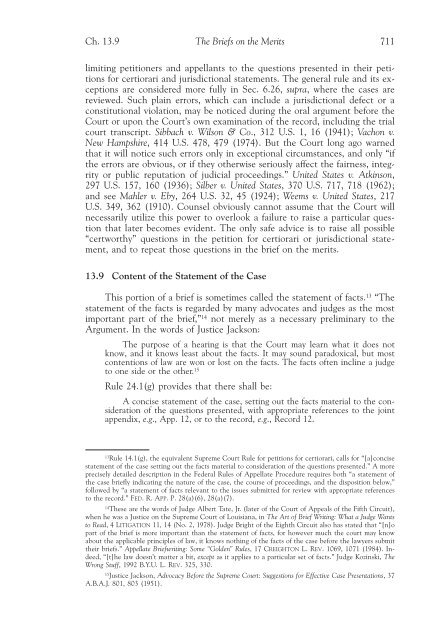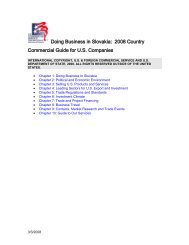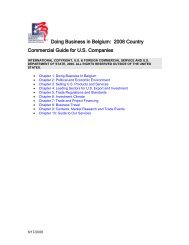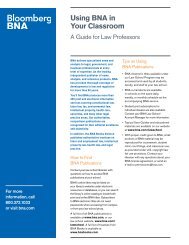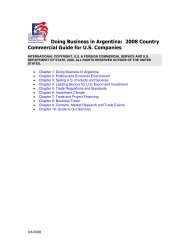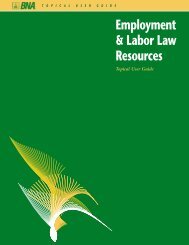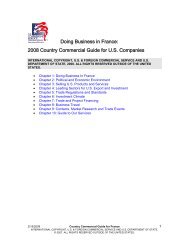You also want an ePaper? Increase the reach of your titles
YUMPU automatically turns print PDFs into web optimized ePapers that Google loves.
Ch. 13.9 <str<strong>on</strong>g>The</str<strong>on</strong>g> <str<strong>on</strong>g>Briefs</str<strong>on</strong>g> <strong>on</strong> <strong>the</strong> <strong>Merits</strong> 711<br />
limiting petiti<strong>on</strong>ers and appellants to <strong>the</strong> questi<strong>on</strong>s presented in <strong>the</strong>ir petiti<strong>on</strong>s<br />
for certiorari and jurisdicti<strong>on</strong>al statements. <str<strong>on</strong>g>The</str<strong>on</strong>g> general rule and its excepti<strong>on</strong>s<br />
are c<strong>on</strong>sidered more fully in Sec. 6.26, supra, where <strong>the</strong> cases are<br />
reviewed. Such plain errors, which can include a jurisdicti<strong>on</strong>al defect or a<br />
c<strong>on</strong>stituti<strong>on</strong>al violati<strong>on</strong>, may be noticed during <strong>the</strong> oral argument before <strong>the</strong><br />
Court or up<strong>on</strong> <strong>the</strong> Court’s own examinati<strong>on</strong> of <strong>the</strong> record, including <strong>the</strong> trial<br />
court transcript. Sibbach v. Wils<strong>on</strong> & Co., 312 U.S. 1, 16 (1941); Vach<strong>on</strong> v.<br />
New Hampshire, 414 U.S. 478, 479 (1974). But <strong>the</strong> Court l<strong>on</strong>g ago warned<br />
that it will notice such errors <strong>on</strong>ly in excepti<strong>on</strong>al circumstances, and <strong>on</strong>ly “if<br />
<strong>the</strong> errors are obvious, or if <strong>the</strong>y o<strong>the</strong>rwise seriously affect <strong>the</strong> fairness, integrity<br />
or public reputati<strong>on</strong> of judicial proceedings.” United States v. Atkins<strong>on</strong>,<br />
297 U.S. 157, 160 (1936); Silber v. United States, 370 U.S. 717, 718 (1962);<br />
and see Mahler v. Eby, 264 U.S. 32, 45 (1924); Weems v. United States, 217<br />
U.S. 349, 362 (1910). Counsel obviously cannot assume that <strong>the</strong> Court will<br />
necessarily utilize this power to overlook a failure to raise a particular questi<strong>on</strong><br />
that later becomes evident. <str<strong>on</strong>g>The</str<strong>on</strong>g> <strong>on</strong>ly safe advice is to raise all possible<br />
“certworthy” questi<strong>on</strong>s in <strong>the</strong> petiti<strong>on</strong> for certiorari or jurisdicti<strong>on</strong>al statement,<br />
and to repeat those questi<strong>on</strong>s in <strong>the</strong> brief <strong>on</strong> <strong>the</strong> merits.<br />
13.9 C<strong>on</strong>tent of <strong>the</strong> Statement of <strong>the</strong> Case<br />
This porti<strong>on</strong> of a brief is sometimes called <strong>the</strong> statement of facts. 13 “<str<strong>on</strong>g>The</str<strong>on</strong>g><br />
statement of <strong>the</strong> facts is regarded by many advocates and judges as <strong>the</strong> most<br />
important part of <strong>the</strong> brief,” 14 not merely as a necessary preliminary to <strong>the</strong><br />
Argument. In <strong>the</strong> words of Justice Jacks<strong>on</strong>:<br />
<str<strong>on</strong>g>The</str<strong>on</strong>g> purpose of a hearing is that <strong>the</strong> Court may learn what it does not<br />
know, and it knows least about <strong>the</strong> facts. It may sound paradoxical, but most<br />
c<strong>on</strong>tenti<strong>on</strong>s of law are w<strong>on</strong> or lost <strong>on</strong> <strong>the</strong> facts. <str<strong>on</strong>g>The</str<strong>on</strong>g> facts often incline a judge<br />
to <strong>on</strong>e side or <strong>the</strong> o<strong>the</strong>r. 15<br />
Rule 24.1(g) provides that <strong>the</strong>re shall be:<br />
A c<strong>on</strong>cise statement of <strong>the</strong> case, setting out <strong>the</strong> facts material to <strong>the</strong> c<strong>on</strong>siderati<strong>on</strong><br />
of <strong>the</strong> questi<strong>on</strong>s presented, with appropriate references to <strong>the</strong> joint<br />
appendix, e.g., App. 12, or to <strong>the</strong> record, e.g., Record 12.<br />
13Rule 14.1(g), <strong>the</strong> equivalent Supreme Court Rule for petiti<strong>on</strong>s for certiorari, calls for “[a]c<strong>on</strong>cise<br />
statement of <strong>the</strong> case setting out <strong>the</strong> facts material to c<strong>on</strong>siderati<strong>on</strong> of <strong>the</strong> questi<strong>on</strong>s presented.” A more<br />
precisely detailed descripti<strong>on</strong> in <strong>the</strong> Federal Rules of Appellate Procedure requires both “a statement of<br />
<strong>the</strong> case briefly indicating <strong>the</strong> nature of <strong>the</strong> case, <strong>the</strong> course of proceedings, and <strong>the</strong> dispositi<strong>on</strong> below,”<br />
followed by “a statement of facts relevant to <strong>the</strong> issues submitted for review with appropriate references<br />
to <strong>the</strong> record.” FED. R. APP. P. 28(a)(6), 28(a)(7).<br />
14<str<strong>on</strong>g>The</str<strong>on</strong>g>se are <strong>the</strong> words of Judge Albert Tate, Jr. (later of <strong>the</strong> Court of Appeals of <strong>the</strong> Fifth Circuit),<br />
when he was a Justice <strong>on</strong> <strong>the</strong> Supreme Court of Louisiana, in <str<strong>on</strong>g>The</str<strong>on</strong>g> Art of Brief Writing: What a Judge Wants<br />
to Read, 4 LITIGATION 11, 14 (No. 2, 1978). Judge Bright of <strong>the</strong> Eighth Circuit also has stated that “[n]o<br />
part of <strong>the</strong> brief is more important than <strong>the</strong> statement of facts, for however much <strong>the</strong> court may know<br />
about <strong>the</strong> applicable principles of law, it knows nothing of <strong>the</strong> facts of <strong>the</strong> case before <strong>the</strong> lawyers submit<br />
<strong>the</strong>ir briefs.” Appellate Briefwriting: Some “Golden” Rules, 17 CREIGHTON L. REV. 1069, 1071 (1984). Indeed,<br />
“[t]he law doesn’t matter a bit, except as it applies to a particular set of facts.” Judge Kozinski, <str<strong>on</strong>g>The</str<strong>on</strong>g><br />
Wr<strong>on</strong>g Stuff, 1992 B.Y.U. L. REV. 325, 330.<br />
15 Justice Jacks<strong>on</strong>, Advocacy Before <strong>the</strong> Supreme Court: Suggesti<strong>on</strong>s for Effective Case Presentati<strong>on</strong>s, 37<br />
A.B.A.J. 801, 803 (1951).


